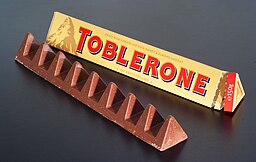In the fourth century B.C., the ancient Greek philosopher Aristotle posited three modes of persuasion that we still employ. Aristotle’s “rhetorical triangle” is ethos, pathos, and logos. It appears in many forms of persuasion - from political speeches to advertising.
We use the word "pathos" when referring to something (experience, art) that evokes compassion, pity, or perhaps a kind of sympathetic pity. It comes from the Greek word páthos meaning "experience, misfortune, emotion, condition.” Related words include empathy (the ability to share someone else’s feelings) pathetic (which can be an insult but in its original usage was more about things that move us to pity), sympathy and apathy (when feelings are absent).
In the persuasive ad market, pathos can be a positive emotion (Look how happy this family is using our product!) to a negative response (Are you in pain? Try our product for relief). Have you seen commercials to donate to help children with life-threatening diseases or to save abandoned pets? Pathos.
The ethos approach is used to convince an audience by offering reliability, honesty, and credibility. In advertising, this usually means a respected authority figure or celebrity giving a product or brand a testimonial or endorsement. That is why many doctors or doctor-like figures are used to endorse health products.
The word comes from Latin and earlier from Greek ēthos "nature, disposition’, customs." That last meaning may seem off, but ethos can also mean the characteristic spirit of a culture, era, or community, as in "the liberal ethos of the 1960s has been lost."
Logos appeals to logic and reason by using statistics, facts, figures and scientific reasoning. Aristotle liked the rationality of this approach.
But the Gospel of John identifies the Christian Logos, through which all things are made, as divine (theos), and identifies Jesus Christ as the incarnate Logos - though there is none of the facts, figures or science in that early use of the term.
Logos also comes from Ancient Greek meaning literally ''I say.'' The word is frequently translated as some variation of logic or reasoning. Originally, it referred to the actual content of a speech and how it was organized.
Logos should not be confused with logo, which is most commonly used to describe a symbol or other design adopted by an organization to identify itself. That word is an abbreviation of logogram or logotype and appeared in English in the 1930s. There is also the computer language LOGO written in all caps.



